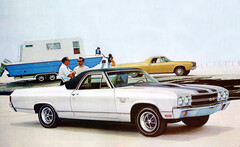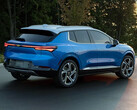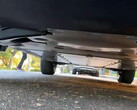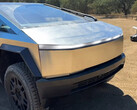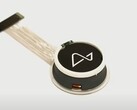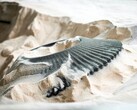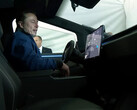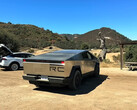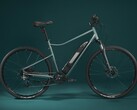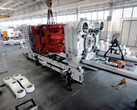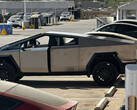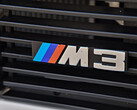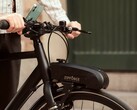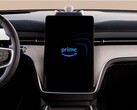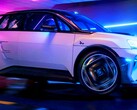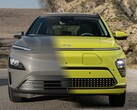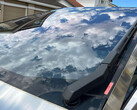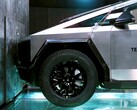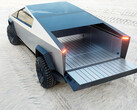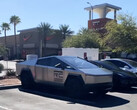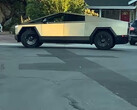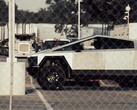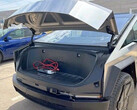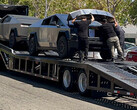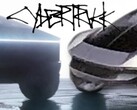While the author of Elon Musk's biography already teased that Tesla's CEO pushed hard for the edgy Cybertruck design, today's release of Walter Isaacson's book throws way more light on what happened. Apparently, Elon Musk and the head of design Franz von Holzhausen started kicking the Cybertruck's tires as early as 2017 during their famed Friday meetings at Tesla's brainstorming studio. Waiting for clues from his CEO, von Holzhausen looked at Ford models and even placed a Chevy Silverado in the studio so that the team had an end goal in terms of functionality in sight.
None of the popular American trucks like the Ford F-150 or the Silverado tickled Elon Musk's fancy, though. While studying their "proportions and components," Musk admitted that he is after a "more exciting, perhaps even surprising" design. Instead of coming up with the futuristic Cybertruck design from the get-go, the team first went down memory lane. Elon Musk bought the Lotus Esprit from a James Bond movie for a cool million and put it in the studio as another example of what unorthodox looks like. That was still a sports car, so they also looked at retro pickup truck designs that were ahead of their time, arriving at Chevrolet's El Camino coupe with truck bed from the 60s. Von Holzhausen was so excited about its prospects that the design team crafted a prototype of an El Camino-style electric pickup truck. When ready, however, they walked around it with Elon Musk and both agreed that the El Camino-esque shape was too "soft" for what they had in mind, a utilitarian body that screamed "the authority of a pickup truck."
Even then, however, Musk didn't arrive at the angular design that Tesla announced in 2019. Instead, the team kept going to the Petersen Automotive Museum where, instead of inspiration, they realized that "pickup trucks basically haven’t changed in their form or their manufacturing process in eighty years" and decided to approach the task in unorthodox manner. Musk now wanted to find a tough material for the body of Tesla's first electric pickup and then take the design from there to whatever new structures and shapes the material would allow. This practical consideration led to the huge stainless steel revelation that is now a done deal for the Cybertruck. After the team toyed around with aluminum and even titanium for durability, Musk had an eureka moment:
But around that time, Musk became enthralled by the possibility of making a rocket ship out of glistening stainless steel. That might also work for a pickup truck, he realized. A stainless steel body would not need painting and could bear some of the vehicle’s structural load. It was a truly out-of-the-box idea, a way to rethink what a vehicle could be. One Friday afternoon, after a few weeks of discussion, Musk came in and simply announced, “We are going to do this whole thing in stainless steel.” Charles Kuehmann was the VP for materials engineering at both Tesla and SpaceX. One of the advantages that Musk had was that his companies could share engineering knowledge. Kuehmann developed an ultra-hard stainless steel alloy that was “cold rolled” rather than requiring heat treatments, which Tesla patented. It was strong enough and cheap enough to use for both trucks and rockets. The decision to use stainless steel for the Cybertruck had a major implication for the engineering of the vehicle. A steel body could serve as the load-bearing structure of the vehicle, rather than making the chassis play that role. “Let’s make the strength on the outside, make it an exoskeleton, and hang everything else from the inside of it,” Musk suggested. The use of stainless steel also opened up new possibilities for the look of the truck. Instead of using stamping machines that would sculpt carbon fiber into body panels with subtle curves and shapes, stainless steel would favor straight planes and sharp angles. That allowed—and in some ways forced—the design team to explore ideas that were more futuristic, edgier, even jarring...
As he looked at the pictures on the display boards, Musk gravitated to the ones that had a futuristic, cyber look. They had recently settled on the design for the Model Y, a crossover version of the Model 3, and Musk had been talked out of some of his more radical and unconventional suggestions. Having played it safe with the Model Y, he did not want that to happen with the design of the pickup truck. “Let’s be bold,” he said. “Let’s surprise people.” Every time someone would point to a picture that was more conventional, Musk would push back and point to the car from the video game Halo or in the trailer for the forthcoming game Cyberpunk 2077 or from Ridley Scott’s movie Blade Runner. His son Saxon, who is autistic, had recently asked an offbeat question that resonated: “Why doesn’t the future look like the future?” Musk would quote Saxon’s question repeatedly. As he said to the design team that Friday, “I want the future to look like the future.” There were a few dissenting voices suggesting that something too futuristic would not sell. After all, this was a pickup truck. “I don’t care if no one buys it,” he said at the end of the session. “We're not doing a traditional boring truck. We can always do that later. I want to build something that’s cool. Like, don’t resist me.” By July 2019, von Holzhausen and Morris had built a full-size mock-up of a futuristic, jarring, cyber design with sharp angles and diamond facets. One Friday they surprised Musk, who had not yet seen it, by putting it in the middle of the showroom floor next to the more traditional model they had been considering. When Musk walked in the door leading from the SpaceX factory, his reaction was instantaneous. “That’s it!” he exclaimed. “I love it. We are doing that. Yes, this is what we are going to do! Yes, okay, done.”
While the Cyberpunk 2077, Halo, and Blade Runner-inspired vehicle got a nickname "Cybertruck" that immediately clicked and became the official title of the model, "a majority of people in this studio hated it," confirms von Holzhausen. So much so, that a few of Tesla's engineers rebelled and "started working secretly on an alternative version" of the design.
Musk, however, loved the Cyberpunk Cybertruck to such an extent that he balked at any idea that softened the angular Cybertruck shape or asked for marketing research with the relentless "I don’t do focus groups." Tesla settled the Cybertruck design in August 2019 when the team had to "come together, work twenty-four-seven, and rally around that date" to unveil it in November.
Source(s)
Walter Isaacson (Amazon)




